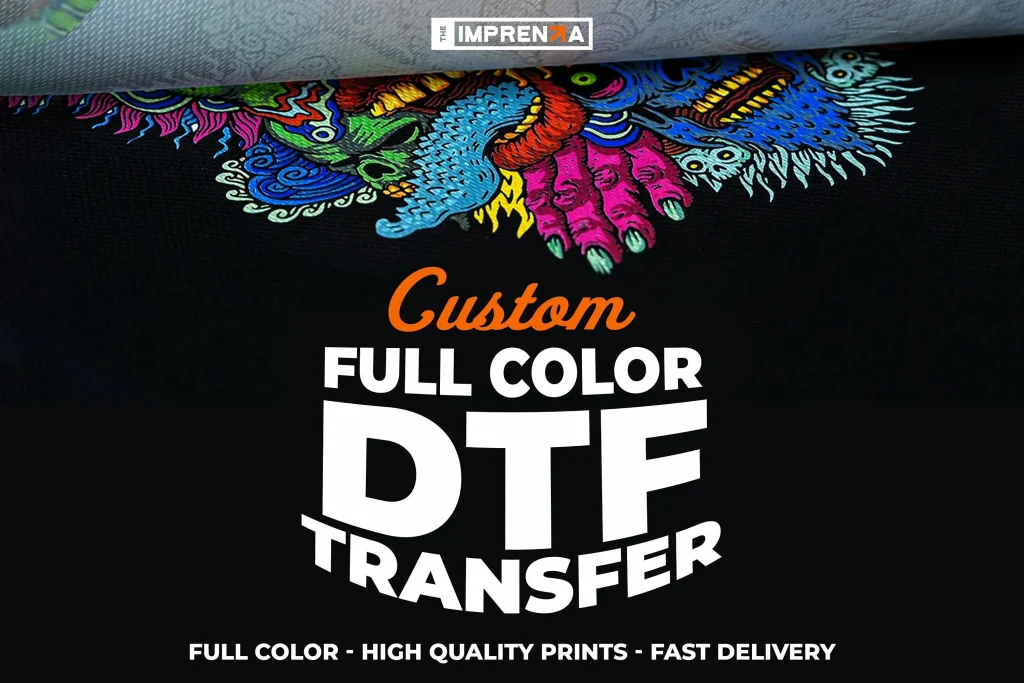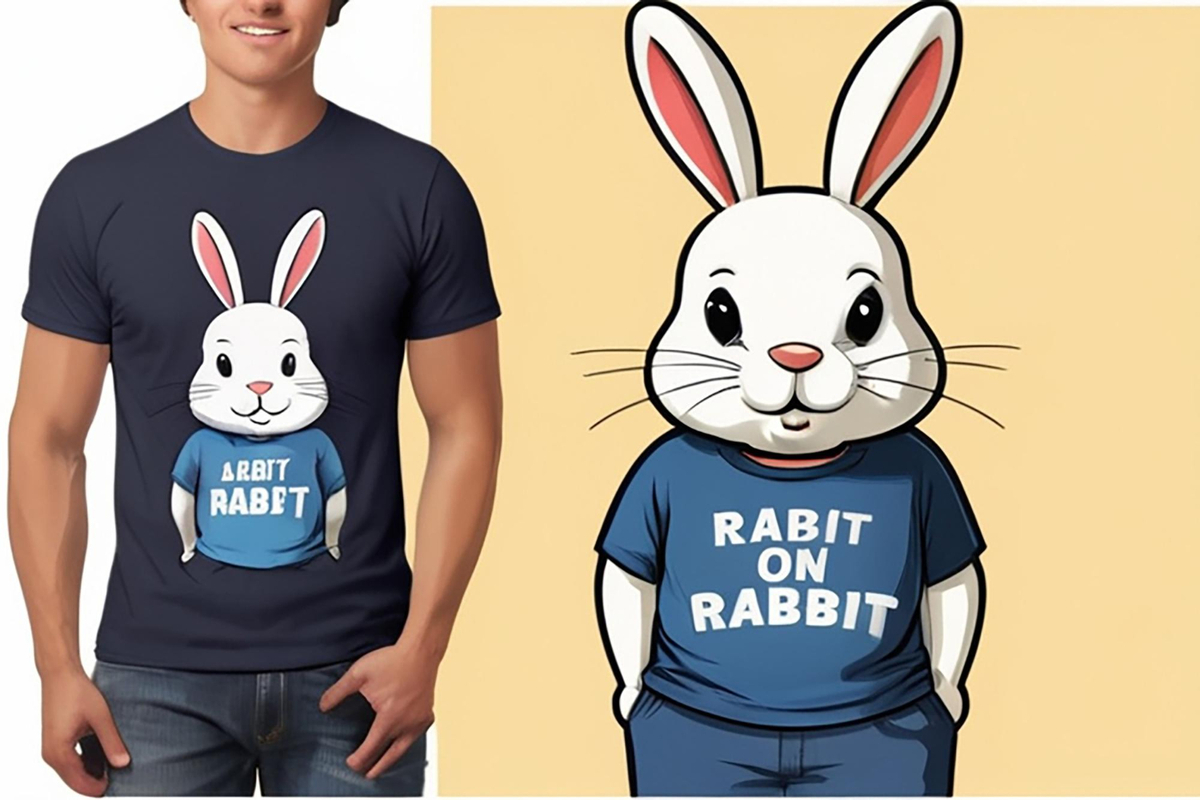DTF Transfers, or Direct-to-Film Transfers, have revolutionized the custom apparel printing landscape, allowing for seamless and vibrant designs. This cutting-edge DTF printing process utilizes a special film to capture detailed images that can be easily transferred onto a variety of textiles, from cotton to polyester. As businesses and DIY enthusiasts look for versatile textile printing methods, understanding the advantages of DTF transfers becomes essential for anyone involved in fabric printing. Many are drawn to DTF printing advantages such as its cost-effectiveness and ability to produce high-quality prints without the need for extensive setup. With the growing demand in the customization market, DTF transfers are emerging as a preferred choice for both small businesses and established brands alike.
Also known as Direct-to-Film printing, the technique of DTF Transfers offers an innovative approach to textile decoration that caters to the needs of modern designers and print providers. This method involves applying designs onto a specialized film, capturing intricate details and vibrant colors that stand out on various materials. Compared to traditional textile printing methods, the DTF process introduces a blend of efficiency and quality, making it an attractive option for custom garment creators. As the popularity of customized apparel soars, many are exploring the unique capabilities that DTF printing brings to the table, providing a fresh avenue for creativity and personalization in the fashion industry.
What are DTF Transfers and Their Benefits?
DTF Transfers, or Direct-to-Film transfers, represent a significant advancement in the domain of custom apparel printing. This method involves printing designs onto a specialized film, which is then transferred onto a wide range of textiles. The flexibility offered by DTF printing caters to diverse fabric types, enabling personalized designs to flourish on t-shirts, bags, and more. This adaptability is particularly appealing to entrepreneurs and small businesses looking to make their mark in the custom printing market.
One of the major advantages of DTF transfers is their vibrant color reproduction. Thanks to the use of water-based inks, users enjoy prints with vivid hues that stand out, even on darker materials. Additionally, DTF technology allows for intricate patterns and details, making it a preferred choice for designers aiming for high-quality prints that resist fading and maintain their allure over time.
The DTF Printing Process Explained
The DTF printing process begins with the use of a DTF printer that prints the desired design onto a special film. This process employs water-based inks, which are not only vibrant but also eco-friendly, aligning with the growing consumer demand for sustainable practices. After the design is printed, a layer of adhesive powder is sprinkled over the ink, which is then melted using a heat press during the transfer stage. This crucial step ensures that the design bonds securely to the material.
Once the transfer is complete, users can achieve a seamless finish on various fabric types. From cotton to polyester blends, DTF transfers can enhance the appearance of any product. This multilevel process of applying ink, adhesive, and heat makes DTF a unique and efficient textile printing method that has been gaining traction in the custom apparel industry.
DTF Printing Advantages Over Other Methods
When comparing DTF printing to traditional methods such as screen printing, the advantages become apparent. First, DTF transfers require significantly lower setup costs. Unlike screen printing, which demands extensive preparation for each design due to the need for screens, DTF allows for quicker iterations and minimal upfront investment. This cost-effectiveness is especially attractive to small businesses and startups.
Moreover, DTF printing is praised for its speed and efficiency. With the capability to handle multiple colors in a single run, producers can create complex designs without the need for separate screens. Such flexibility allows businesses to offer a wide range of options for customization, deepening customer satisfaction and engagement.
Key Equipment Needed for DTF Printing
To ensure successful execution of DTF transfers, certain equipment is necessary. The centerpiece of the operation is a DTF printer, specially designed to accommodate the specific requirements of this printing method. These printers use high-quality, water-based inks that are essential for vibrant and durable prints.
In addition to a printer, businesses will require transfer films and adhesive powders, both critical components in the DTF printing process. A reliable heat press machine is also essential for properly transferring designs to the fabric. Investing in quality equipment not only influences the end result but also impacts efficiency and long-term success in the custom apparel market.
Emerging Trends in the DTF Printing Market
The DTF printing market is currently experiencing a surge in popularity, driven by escalating consumer preference for personalized apparel. Customers are increasingly seeking unique and customized designs that stand out, creating a high demand for versatile printing solutions. Entrepreneurs are capitalizing on this trend, particularly among home-bound businesses looking to offer tailored products.
Industry reports indicate that DTF transfers are positioned for significant growth in the coming years. Innovations such as improved ink formulations and new printing technologies promise to enhance the capabilities of DTF printing further. This evolution presents vast opportunities for print service providers, especially those willing to adapt to consumer preferences and invest in emerging technologies.
Overcoming Challenges in DTF Printing
While DTF printing offers numerous benefits, it is not without its challenges. One of the main hurdles potential users face is the initial cost investment. Purchasing quality DTF equipment can appear costly, especially for those just starting in the custom printing business. However, understanding the long-term savings and profitability potential can help ease concerns about the upfront investment.
Another challenge is the learning curve associated with DTF printing. Each printer and material may have unique requirements, necessitating careful attention to setup and application processes. New users must be prepared to experiment with different settings to achieve optimal results, as mastering the technique takes practice and patience.
Frequently Asked Questions
What are DTF transfers and how do they work in custom apparel printing?
DTF transfers, or Direct-to-Film transfers, are an innovative method in custom apparel printing where designs are printed onto a specialized film using DTF printers. The printed film is then coated with adhesive powder, which is activated during the heat transfer process, allowing the design to adhere to materials like cotton and polyester.
What are the advantages of using DTF printing compared to traditional methods?
DTF printing offers several advantages over traditional printing methods, including versatility across various materials, excellent color quality, and lower setup costs. It allows for detailed and vibrant designs, even on dark fabrics, while requiring minimal upfront investment and providing quick turnaround for custom designs.
What types of materials can I use DTF transfers on?
DTF transfers can be applied to a broad range of materials, such as 100% cotton, polyester, and fabric blends. This versatility makes DTF printing suitable for many products, from t-shirts to bags, offering endless possibilities for custom apparel projects.
What equipment is necessary for executing the DTF printing process?
To conduct the DTF printing process, you will need a DTF printer, specialized transfer films, adhesive powder, and a heat press machine. These components are essential to ensure high-quality prints and successful heat transfer of designs onto your chosen fabrics.
How does the DTF printing process differ from other textile printing methods?
Unlike other textile printing methods, DTF printing transfers designs directly from a printed film to the fabric using heat and pressure. This method stands out due to its ability to produce vibrant, detailed prints on various materials, with an easier setup and often lower costs compared to traditional screen printing.
What challenges might I face when starting with DTF transfers?
Some common challenges with DTF transfers include the initial cost of quality equipment and the learning curve associated with mastering the process. Users must familiarize themselves with printer settings and the precise application of heat and pressure to achieve optimal results in custom apparel printing.
| Key Aspects | Details |
|---|---|
| Definition | DTF Transfers refer to a method of transferring designs printed on film onto various fabrics. |
| Process | Involves printing designs on a specialized film, applying adhesive powder, and using heat to transfer the design onto fabric. |
| Materials Required | DTF Printers, Transfer Films, Adhesive Powder, and Heat Press are essential tools needed for DTF Transfers. |
| Advantages | Versatile applications on multiple fabrics, excellent color quality, and lower setup costs compared to traditional methods. |
| Challenges | Initial equipment costs and a learning curve to master the printing process can pose challenges to beginners. |
| Market Growth | Rising popularity due to personalization trends, accessibility of technology, and anticipated continued growth through 2025. |
Summary
DTF Transfers are revolutionizing the custom printing industry by providing a flexible and efficient way to produce high-quality designs. As a user-friendly method, DTF allows individuals to achieve stunning results on a variety of fabrics, making it a go-to choice for custom apparel. With advantages such as detailed color reproduction and lower operational costs, DTF transfers are gaining momentum among small businesses and entrepreneurs alike. As technology advances and becomes more accessible, the potential for innovative applications in DTF printing continues to expand, laying a promising future for those involved in this vibrant printing avenue.



